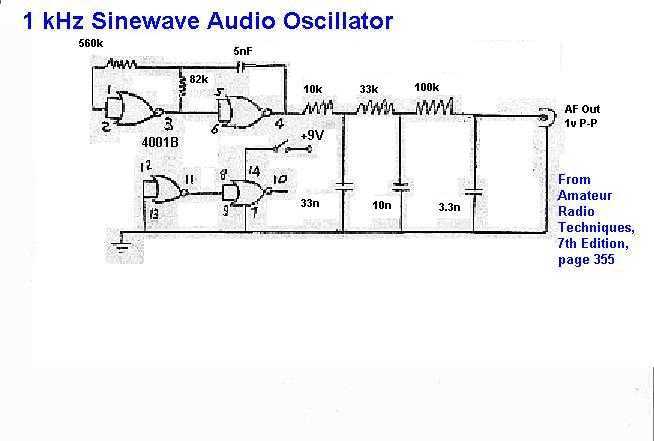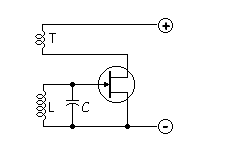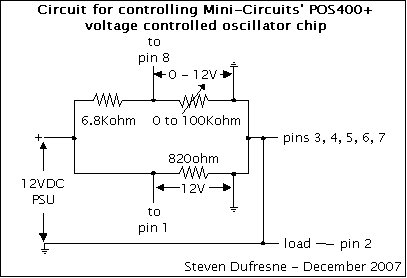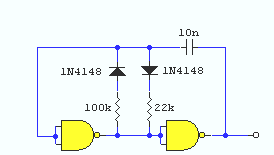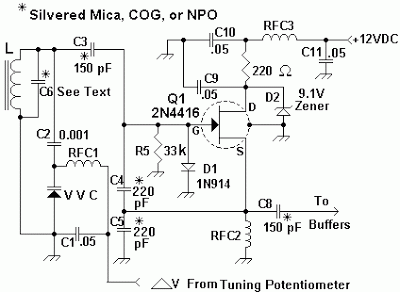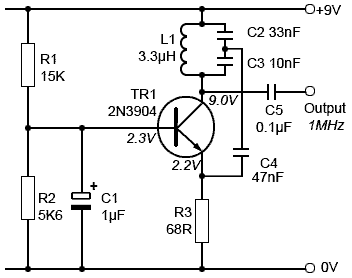
Bubba Oscillator
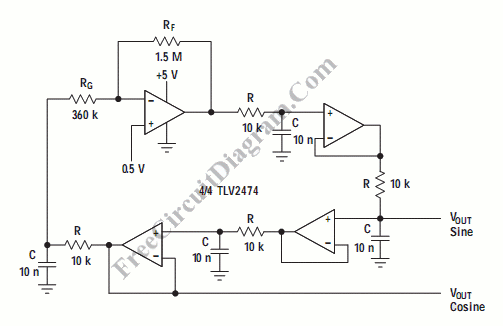
The Bubba oscillator is another example of a phase shift oscillator. It utilizes a quad op-amp package to achieve a 45-degree phase shift.
The Bubba oscillator is a type of phase shift oscillator that employs a configuration of operational amplifiers (op-amps) to generate sine wave oscillations. It is particularly notable for its use of a quad op-amp package, which contains four op-amps in a single integrated circuit, allowing for compact circuit designs.
In the typical design of a Bubba oscillator, multiple stages are used to create the necessary phase shifts. The circuit typically consists of two or more op-amps configured in a feedback loop. Each stage introduces a specific phase shift, and the total cumulative phase shift must be 360 degrees (or 0 degrees) for sustained oscillation. The Bubba oscillator specifically achieves a phase shift of 45 degrees per stage, which means that a minimum of eight stages is required to achieve the total necessary phase shift.
The feedback network is often composed of resistors and capacitors, which determine the frequency of oscillation. The frequency can be adjusted by changing the values of these passive components. The stability and amplitude of the oscillation are influenced by the gain settings of the op-amps as well as the quality of the components used in the feedback network.
The output of the Bubba oscillator is typically a sine wave, which can be used in various applications, including signal generation, waveform shaping, and frequency modulation. The design benefits from the low distortion characteristics of op-amps, making it suitable for high-fidelity applications. Additionally, the compact nature of the quad op-amp package reduces the overall footprint of the circuit, making it ideal for integration into larger systems.Bubba oscillator is another example of phase shift oscillator. The Bubba oscillator takes the advantage of quad op-amp package to get 45 degree phase shift for. 🔗 External reference
The Bubba oscillator is a type of phase shift oscillator that employs a configuration of operational amplifiers (op-amps) to generate sine wave oscillations. It is particularly notable for its use of a quad op-amp package, which contains four op-amps in a single integrated circuit, allowing for compact circuit designs.
In the typical design of a Bubba oscillator, multiple stages are used to create the necessary phase shifts. The circuit typically consists of two or more op-amps configured in a feedback loop. Each stage introduces a specific phase shift, and the total cumulative phase shift must be 360 degrees (or 0 degrees) for sustained oscillation. The Bubba oscillator specifically achieves a phase shift of 45 degrees per stage, which means that a minimum of eight stages is required to achieve the total necessary phase shift.
The feedback network is often composed of resistors and capacitors, which determine the frequency of oscillation. The frequency can be adjusted by changing the values of these passive components. The stability and amplitude of the oscillation are influenced by the gain settings of the op-amps as well as the quality of the components used in the feedback network.
The output of the Bubba oscillator is typically a sine wave, which can be used in various applications, including signal generation, waveform shaping, and frequency modulation. The design benefits from the low distortion characteristics of op-amps, making it suitable for high-fidelity applications. Additionally, the compact nature of the quad op-amp package reduces the overall footprint of the circuit, making it ideal for integration into larger systems.Bubba oscillator is another example of phase shift oscillator. The Bubba oscillator takes the advantage of quad op-amp package to get 45 degree phase shift for. 🔗 External reference
